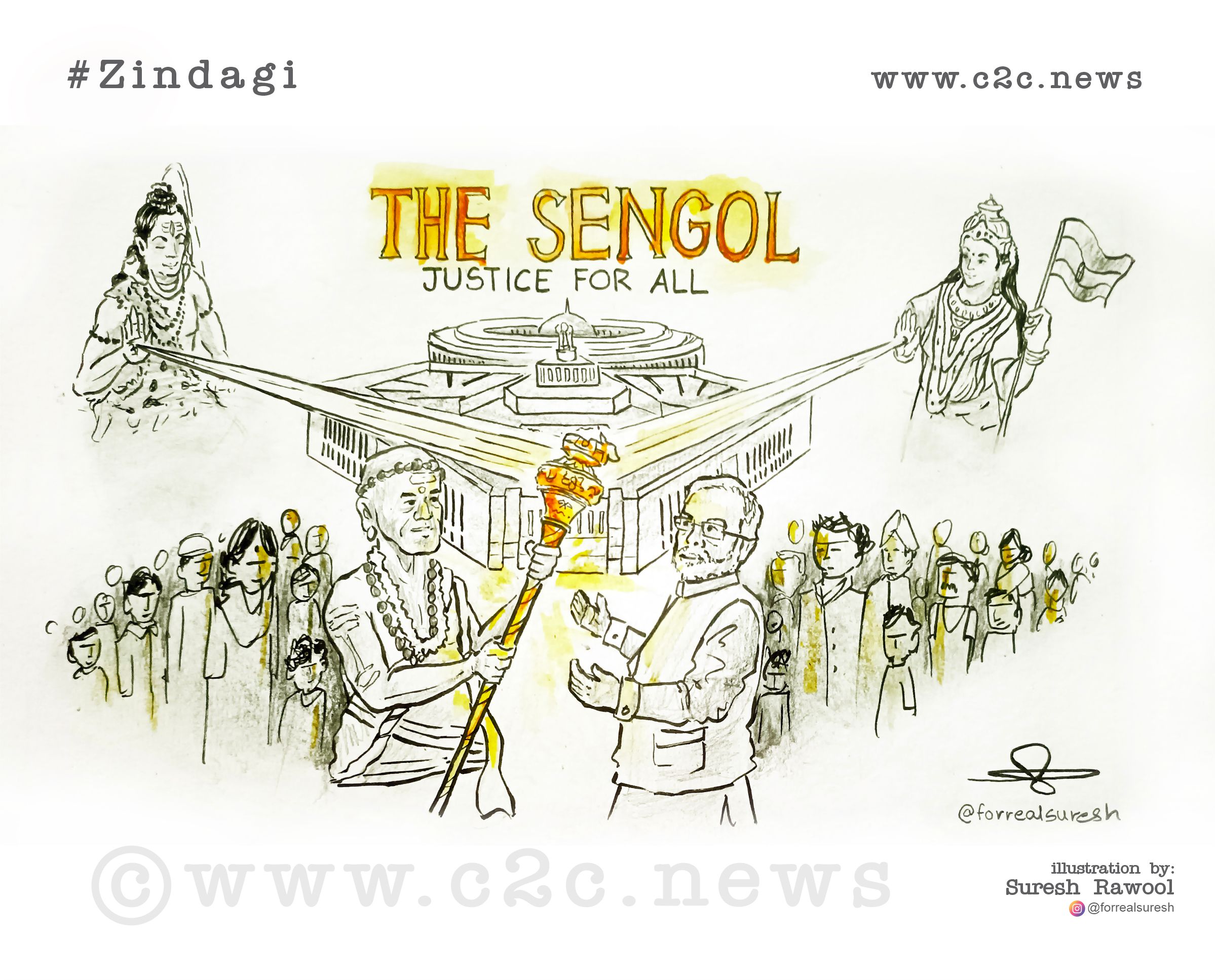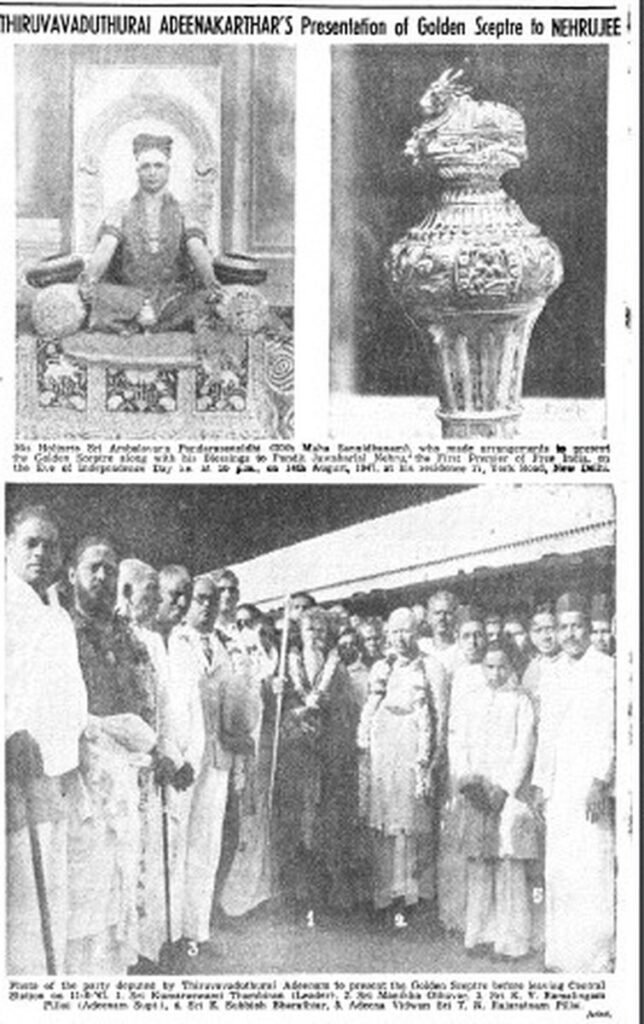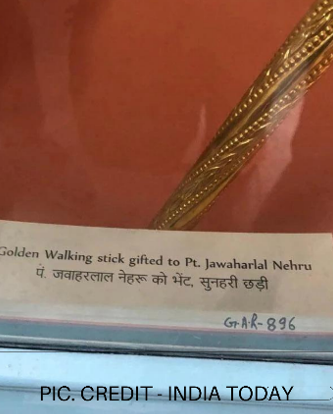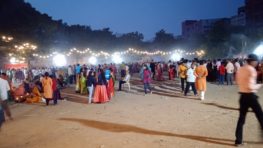
Sengol gets its name from the Tamil word ‘Semmai’, meaning righteousness. The sceptre is a historical symbol of Independence as it signifies the transfer of power from the Britishers to the Indians.
Measuring five feet in length, this gold coated silver sceptre features an intricately carved ‘Nandi’ at the top, which is meant to represent the concept of justice. It was made during the time of Independence in 1947, when the British handed over power to India.
It was crafted by the famous jewellers, Vummidi Bangaru Jewellers in Chennai. C.Rajagopalachari came up with the idea of the sceptre that was used in Tamil tradition. When a new Chola king assumes power, a high priest hands over a sceptre to him.

As Home Minister Amit Shah said, “A historical event is being revived on this occasion. The historic sceptre, ‘Sengol’, will be placed in the new Parliament building. It was used on August 14, 1947, by PM Nehru when the transfer of power took place from the British”.
PM Narendra Modi & Lok Sabha Speaker Om Birla will dedicate to the nation the new Parliament building on May 28. Invitations have been sent to the MPs of both Houses. All CMs of all the states & Union Territories have been sent the invitation.
Apart from sitting members of the parliament, invitations have been sent to former loksabha & rajyasabha speakers. Apart from this, invitations have also been sent to Secretaries of all ministries of the Government of India.
Some political parties are not pleased with the inauguration function. This is quite obvious. Opposition goes to any extent to oppose what PM Modi does. Initially there were efforts to stop the construction. Now that it is ready for inauguration, there were attempts made by way of PIL to stop Prime Minister from doing inauguration, though dismissed by Supreme Court.
The issue here is over the years most of the political parties behave to be secular political parties including INC but when the opportunity comes they leave no stone unturned to create problems for Sanatan Dharma and its rituals. While temple run is at its peak just before elections but they show their true colors for rest of the time. Needless to mention that Congress on record told Hon. Supreme Court of India that there are historical evidence of Bhagwan Ram https://timesofindia.indiatimes.com/india/no-historical-proof-of-ram-centre-tells-sc/articleshow/2363595.cms
Sengol is a Tamil word that means “sceptre” or “dharma danda”. It is a ceremonial object that symbolizes the authority and legitimacy of a ruler. Sengol has a long history in the Tamil culture, dating back to the Chola dynasty, when it was used to mark the transfer of power from one king to another by the high priests.
Sengol also has a special significance for India’s Independence, as it is treated as the symbol of transfer of power from the British to the Indians. On that historic night, Jawaharlal Nehru, the first prime minister of India, received the Sengol. The Sengol was crafted by a Tanjore-based mutt, the Thiruvavaduthurai Adheenam, and presented to PM Nehru. The Sengol was then kept in the Nehru Gallery of the Allahabad Museum, where it was tagged a golden walking stick gifted to PM Nehru. This is a matter of investigation for the present government. No one knew anything about this till classical dancer Padma Subrahmanyam wrote a email to PMO in 2021.

What efforts were made by PMO and how did they find and how it was decided to have Sengol be part of the new New Parliament House, needs to be when official statement is made sometime later.
Sengol has its historical and cultural context, and its impact and relevance for India’s democracy and identity.
The ceremony of handing over the Sengol to Nehru on the night of August 14, 1947 was a unique and historic event that marked the end of colonial rule and the beginning of a new era for India. Lord Mountbatten wanted discussed with Nehru and wanted to know the process of handing over the reigns back to India. He in turn asked C Rajagopalachari (Rajaji).
The idea of using the Sengol as a symbol of power transfer came from Rajaji. He contacted the Thiruvavaduthurai Adheenam, who agreed to craft the Sengol. The Adheenam commissioned two jewellers from Chennai, Vummidi Ethirajulu and Vummidi Sudhakar, to make the Sengol out of gold-plated silver. The Sengol is five feet long and had a Nandi bull on top, symbolizing justice. The Adheenam also sent two sannyasins, a nadaswaram player and a singer to Delhi to perform the ceremony. As per the official document three people including deputy High Priest of Adheenam, Nadaswaram player Rajarathinam Pillai and Oduvar – the singer, brought in the newly made Sengol from Tamil Nadu.
During the ceremony that took place on August 14, 1947 a priest gave the sceptre to Lord Mountbatten and then took it back. The Sengol was then purified with holy water. The Sengol was then taken in procession to Nehru’s house where it was handed over to him. A special song was rendered, as specified by the high priest. This was done in the night of August 14, 1947 just before Nehru delivered his famous “Tryst with destiny” speech in Constituent Assembly.
The meaning and symbolism of the Sengol are rooted in the Tamil culture and tradition. The Sengol represents the moral duty and responsibility of a ruler to govern with justice and fairness. The Nandi bull on top of the Sengol is symbolic of “Nyaya” or justice2. The Nandi bull is also associated with Lord Shiva, who is considered as the supreme judge and destroyer of evil. The Sengol also signifies the sovereignty and dignity of India as a nation. By receiving the Sengol, Nehru accepted not only his own role as the prime minister but also his obligation to uphold the values and aspirations of independent India
Sengol is more than just a sceptre or a dharma danda. It is a sacred emblem that embodies India’s rich and diverse history, culture and tradition. It connects India’s past with its present and future, by reminding us of our glorious heritage as well as our democratic ideals. It also represents India’s unity in diversity, by celebrating our regional identities as well as our national pride. By installing the Sengol in the new Parliament building, Prime Minister Narendra Modi is paying tribute to India’s first prime minister Jawaharlal Nehru, who received the Sengol on the eve of Independence, and also honoring India’s civilizational legacy that dates back to the Chola dynasty and beyond.
Now by installing the Sengal in new Parliament Complex and next to Lok Sabha Speaker’s seat, PM Modi is restoring history lost for 75 years. We are mother of Democracy for a reason. There are rituals, responsibilities and accountabilities. There is lot to be done. Installing The Sengol in new Parliament Complex is one of the highest event in celebration of 75 Years of Independence.
Pic Credits: India Today
Feature Pic: Suresh Rawool
Content Credits & Reference: Yashawini @DharmaRakshathi (Twitter), TOI, Indian Express, One India, First Post




